Although they were not introduced until the 1970's, Chemical Indanthren dyes from Germany are now the most commonly used dye in The Gambia. Sold in dye-shops such as this, they are simply mixed with caustic soda and sodium hydrosulphite for a quick, easy and colorfast way of creating color on fabric.
Musa is a batik artist in Sukuta, a small village a few kilometers outside Banjul and one of the few who still uses the traditional ways of dying with natural indigo and kola nuts. I was lucky enough to study with him during my time here. We used indigo, kola nut and cashew bark to create this stamped batik and mango painting - absolutely no chemicals involved!
Coming from the 'cola nitida' tree, Kola nuts are an important trading commodity in Western African countries and the only stimulant allowed by Islam, making them especially popular with this Muslim society. They produce a deep orange color which when mixed with indigo can create an incredible range of blues, greens and browns.

To make the dye, the nuts are pounded into powder and mixed with water to create a lumpy bright orange liquid.

The batiked or tie-dyed fabric is then dipped and re-dipped multiple times depending on the strength of color desired.
Once dried, the fabric is often waxed again and dyed with varying shades of indigo blue. Although synthetic indigo is now most widely used, Musa still uses the indigo balls from dried indigo leaves and no chemicals in his dye.
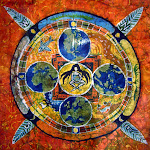
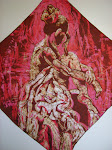

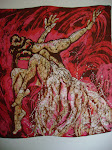

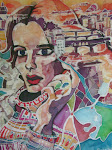
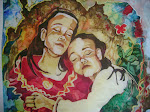









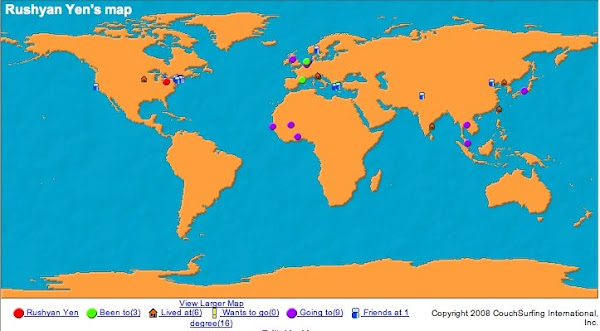
No comments:
Post a Comment